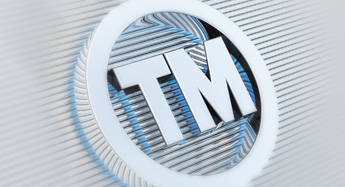Finding Nimoral Trade Mark to be confusingly similar
June 2017
Background
Azanta A/S ("Azanta") sought to register the word mark NIMORAL (the "Applicant’s Mark") in respect of ‘Pharmaceutical preparations for enhancing the effect of radiotherapy on cancer patients’ within Class 5 of the Nice Agreement. Novartis AG opposed the application on the basis that it is confusingly similar to their word mark NEORAL (the "Earlier Mark"). The table below details the two marks.

The opposition was upheld in the first instance by the Opposition Division. The Fourth Board of Appeal dismissed Azanta’s appeal after finding the marks to be confusingly similar. Azanta appealed further to the General Court on the grounds that the Fourth Board of Appeal had wrongly found the marks to be confusingly similar.
The Decision of the General Court
Azanta put forward a single plea alleging infringement of Article 8(1)(b) of Regulation No 207/2009. In its Decision on the 6 April 2017, General Court held that the Board of Appeal had rightly considered that the relevant public for the products at issue would be composed of both health professionals (more specifically doctors specialised in oncology and the administration of radiotherapy to cancer patients) and patients.
The General Court also held that:
- The Board of Appeal had also been correct in finding that the relevant public is particularly attentive considering the goods at issue and that health professionals display a high degree of attention when they prescribe medical products. At the same time, patients display a high degree of attention when purchasing pharmaceuticals without prescription and are likely to be reasonably well-informed about the products they are purchasing, bearing in mind that they affect their health. Even presuming that the products are prescription-based, the patients are still likely to display a high degree of attention when taking the prescription, in light of the fact that the products are pharmaceuticals.
- The goods covered by the Applicant’s Mark are identical to the goods covered by the Earlier Mark, "Pharmaceutical preparations for enhancing the effect of radiotherapy on cancer patients" falls within the wider class of "Pharmaceutical preparations".
- The two marks have an average degree of similarity. Both are made up of single words, the Earlier Mark being 6 letters long and the Applicant’s Mark containing 7 letters. Five of the letters in both marks are identical and placed in the same order, with both marks beginning with the letter ‘n’ and ending with the letter ‘l’. The fact that there is some difference in the middle letters is not conclusive to suggest no similarity between the marks, since the consumer considers the marks as a whole.
- The Board of Appeal had been correct in finding that at least the majority of the relevant public would see both marks as composed by three syllables – NE-O-RAL and NI-MO-RAL. The last syllables in both marks are identical, and the middle syllable is almost identical, the addition of ‘m’ in the Applicant’s Mark being a phonetically weak consonant. The first syllables also only have a small difference, in that they contain different vowels. Overall the two marks have an average degree of similarity.
- The two marks do not convey any clear conceptual meaning, so a conceptual comparison was not possible.
- The fact that the relevant public consists of consumers with a high level of attention is not sufficient to affect the finding of likelihood of confusion given that the marks are so similar. The relevant public would only rarely have the opportunity to compare the two marks directly, and would instead have to rely on imperfect recollection when faced with either of the two marks. Give that the goods are identical and the marks have an average level of similarity, there is a likelihood of confusion.
The General Court dismissed the action in its entirety, holding that is was not necessary to consider the second head of the Applicant's claim, and ordered Azanta to pay the costs in accordance with the form of order sought by EUIPO.
If you have any questions on this article or would like to propose a subject to be addressed by Synapse please contact us.



Andi Terziu
Andi is a paralegal in the IP and media team.
"The fact that the relevant public consists of consumers with a high level of attention is not sufficient to affect the finding of likelihood of confusion"

